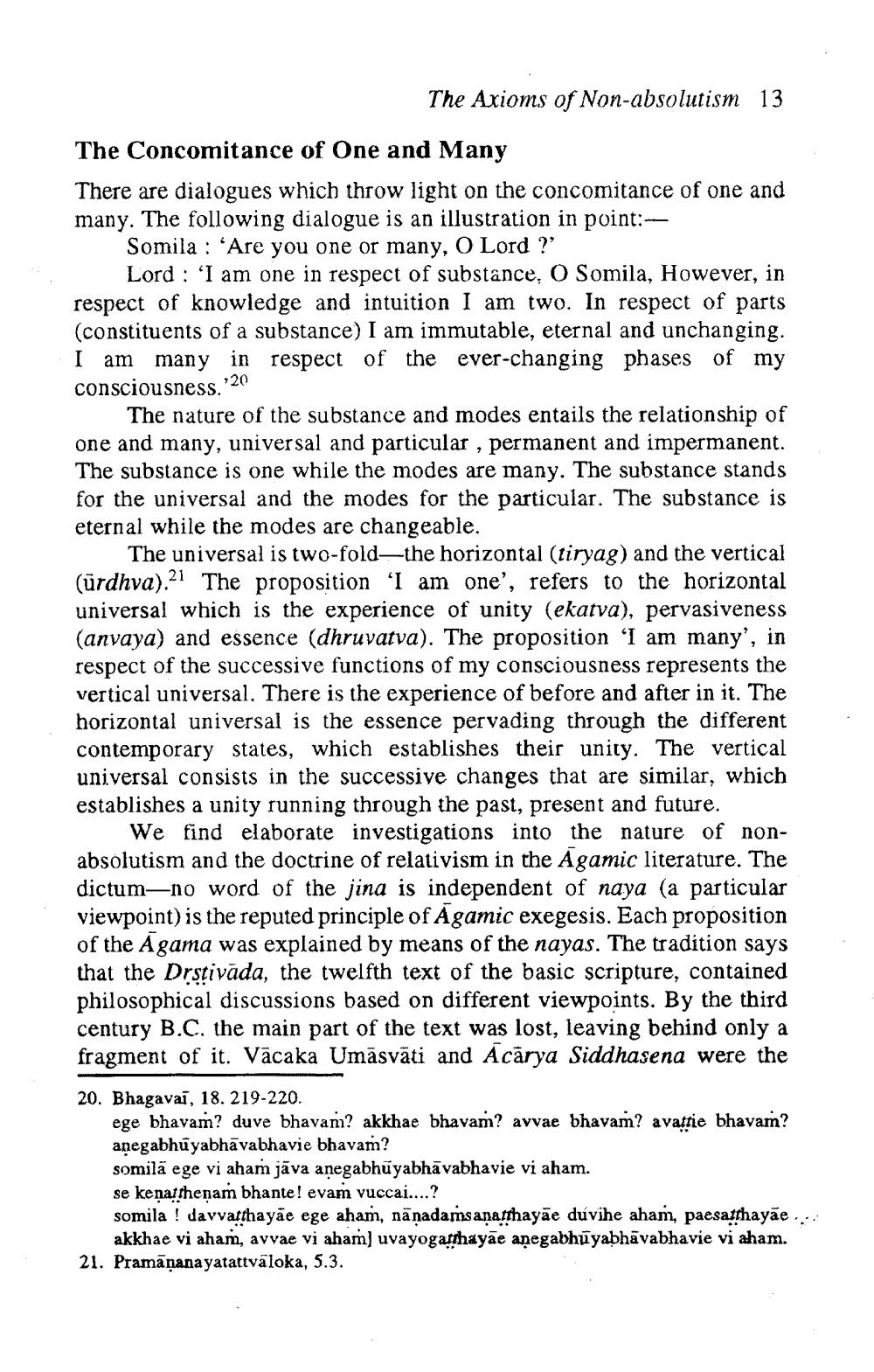________________
The Axioms of Non-absolutism 13
The Concomitance of One and Many There are dialogues which throw light on the concomitance of one and many. The following dialogue is an illustration in point:
Somila : 'Are you one or many, O Lord ?
Lord : 'I am one in respect of substance, O Somila, However, in respect of knowledge and intuition I am two. In respect of parts (constituents of a substance) I am immutable, eternal and unchanging. I am many in respect of the ever-changing phases of my consciousness. 20
The nature of the substance and modes entails the relationship of one and many, universal and particular , permanent and impermanent. The substance is one while the modes are many. The substance stands for the universal and the modes for the particular. The substance is eternal while the modes are changeable.
The universal is two-fold—the horizontal (tiryag) and the vertical (ürdhva).21 The proposition 'I am one', refers to the horizontal universal which is the experience of unity (ekatva), pervasiveness (anvaya) and essence (dhruvatva). The proposition 'I am many', in respect of the successive functions of my consciousness represents the vertical universal. There is the experience of before and after in it. The horizontal universal is the essence pervading through the different contemporary states, which establishes their unity. The vertical universal consists in the successive changes that are similar, which establishes a unity running through the past, present and future.
We find elaborate investigations into the nature of nonabsolutism and the doctrine of relativism in the Agamic literature. The dictum—no word of the jina is independent of naya (a particular viewpoint) is the reputed principle of Agamic exegesis. Each proposition of the Agama was explained by means of the nayas. The tradition says that the Drstivāda, the twelfth text of the basic scripture, contained philosophical discussions based on different viewpoints. By the third century B.C. the main part of the text was lost, leaving behind only a fragment of it. Vācaka Umāsvāti and Acārya Siddhasena were the 20. Bhagavai, 18. 219-220.
ege bhavam? duve bhavam? akkhae bhavam? avvae bhavam? avattie bhavam? anegabhuyabhāvabhavie bhavam? somila ege vi aham jāva anegabhūyabhāvabhavie vi aham. se kenatshenam bhante! evam vuccai....? somila ! davvatthayae ege aham, nānadamsanatthayae duvihe aham, paesatthayae ...
akkhae vi aham, avvae vi aham) uvayogatthayae anegabhuyabhāvabhavie vi aham. 21. Pramāṇanayatattväloka, 5.3.




